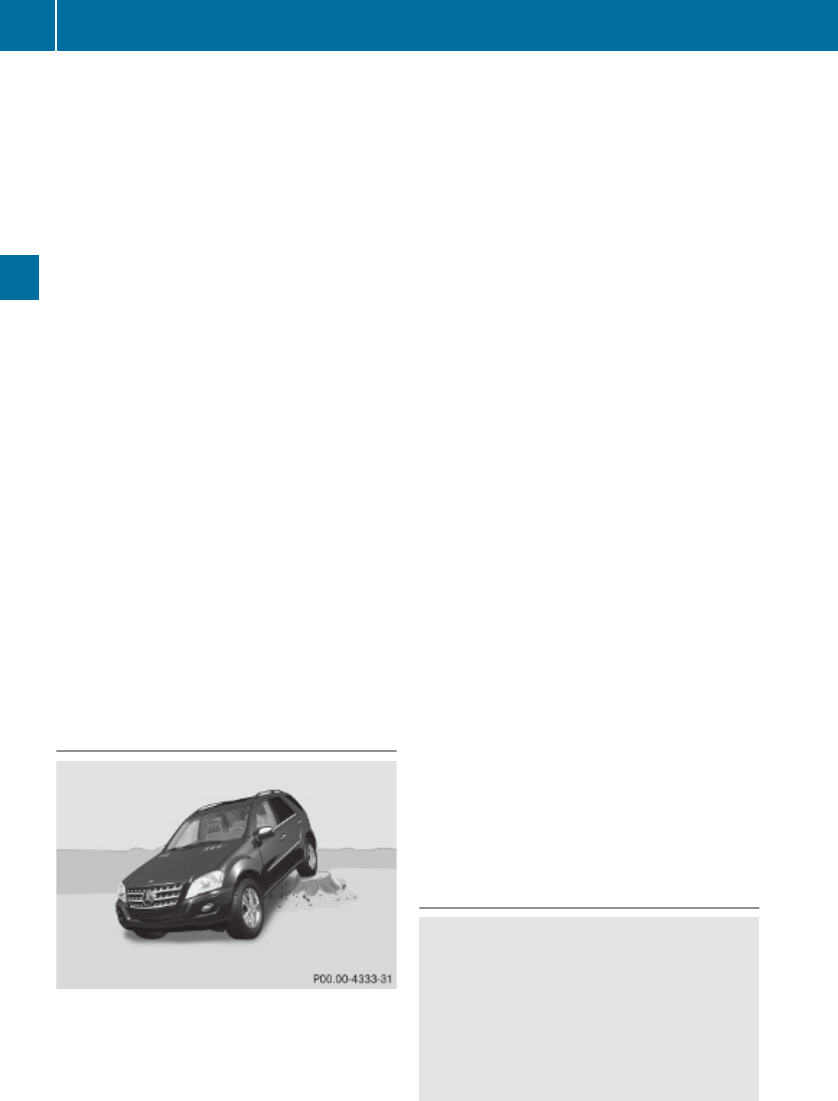
!
Never accelerate before driving into the
water. The bow wave could force water into
the engine and auxiliary equipment, thus
damaging them.
R
Drive through the water slowly and at a
constant speed.
R
Do not stop vehicle while immersed in
water, and do not shut off the engine.
!
Do not open any of the vehicle’s doors
while driving through water. Water could
otherwise enter the vehicle interior and
damage the vehicle’s electronics, as well as
the interior equipment.
R
There is a very high level of driving
resistance in water. The surface is slippery
and may not be firm, making pulling away
in water difficult and dangerous.
R
Make sure that only small bow waves are
formed when driving the vehicle through
water.
R
Clean mud off the tire tread after driving
through water.
R
To dry the brakes, apply pressure to the
brake pedal several times while driving
after leaving the water.
Crossing obstacles
!
Obstacles can damage the vehicle
underbody or suspension components. If
possible use the assistance of a second
person outside the vehicle to scout the
path you intend to take and check for
adequate ground clearance when you cross
obstacles with your vehicle. The person
assisting you outside the vehicle should
always be a safe distance away from the
vehicle and positioned so that he or she
cannot get hurt in case of any unexpected
vehicle movement.
After off-road driving or crossing obstacles,
inspect vehicle for any damage, especially
vehicle underbody and suspension
components. Failure to do so can adversely
affect the vehicle’s future performance,
including increased chance of an accident.
When driving over tree stumps, big rocks and
other obstacles, observe the following rules:
R
Make sure the off-road driving program
(Y page 155) is switched on.
R
Avoid high engine speeds.
R
Shift automatic transmission into gear
range 1 (Y page 113).
R
Check the vehicle clearance before
crossing obstacles.
R
Cross obstacles (e.g. tree stumps or big
rocks) very slowly by aiming one of the front
wheels at the center of the obstacle, and
repeat same with the rear wheel.
!
Special attention is needed when you
cross obstacles on a steep incline.
The vehicle could slide sideways as a result
of its possible slanted position which in turn
may result in the vehicle tipping or rolling
over.
Driving on sand
G
Warning!
Do not reduce the tire inflation pressure
before driving through sand. However, if you
do so, remember to correct the tire inflation
pressure before continuing your trip. Driving
with reduced tire inflation pressure increases
the risk of losing control of the vehicle and
rolling over.
252
Driving instructions
Operation
164_AKB; 7; 31, en-US
d2ureepe, Version: 2.11.8.1
2009-09-11T12:07:36+02:00 - Seite 252


















